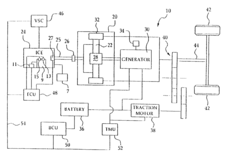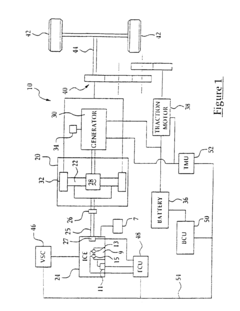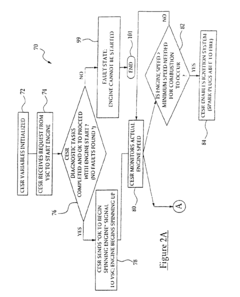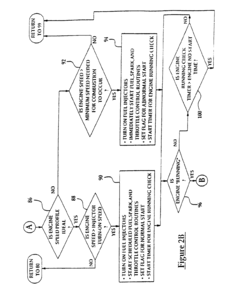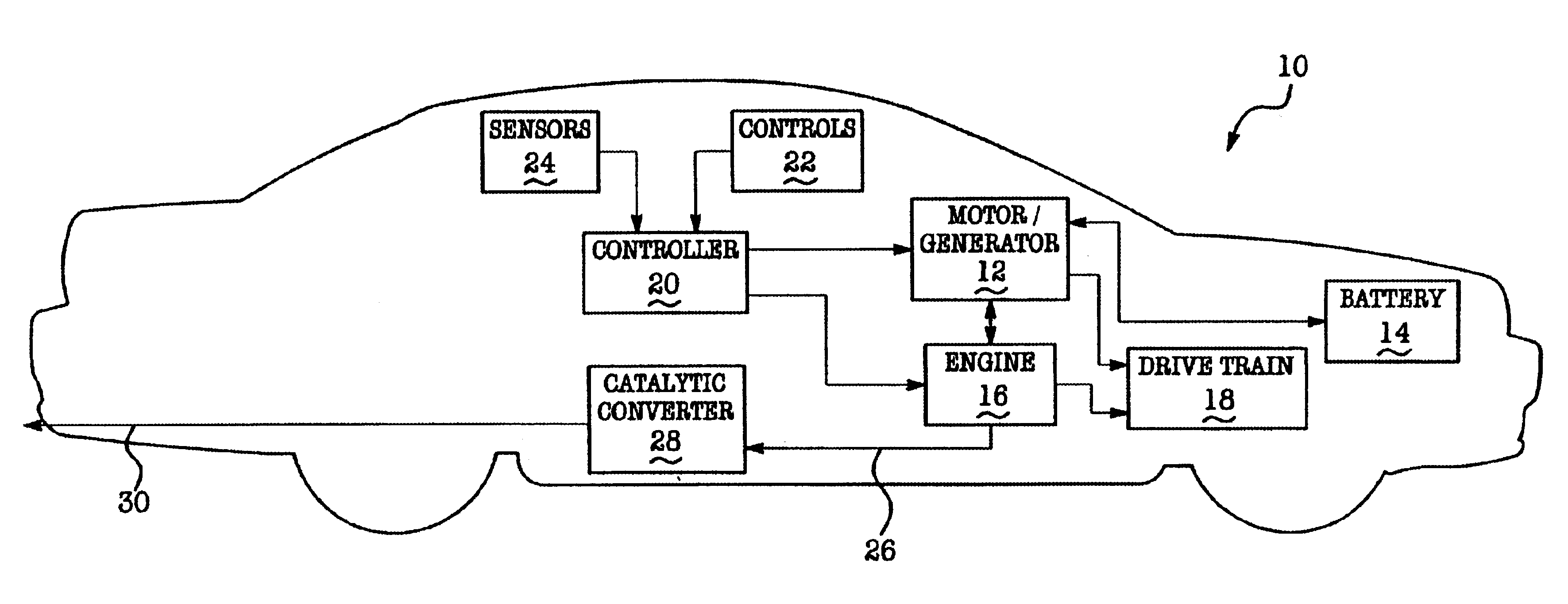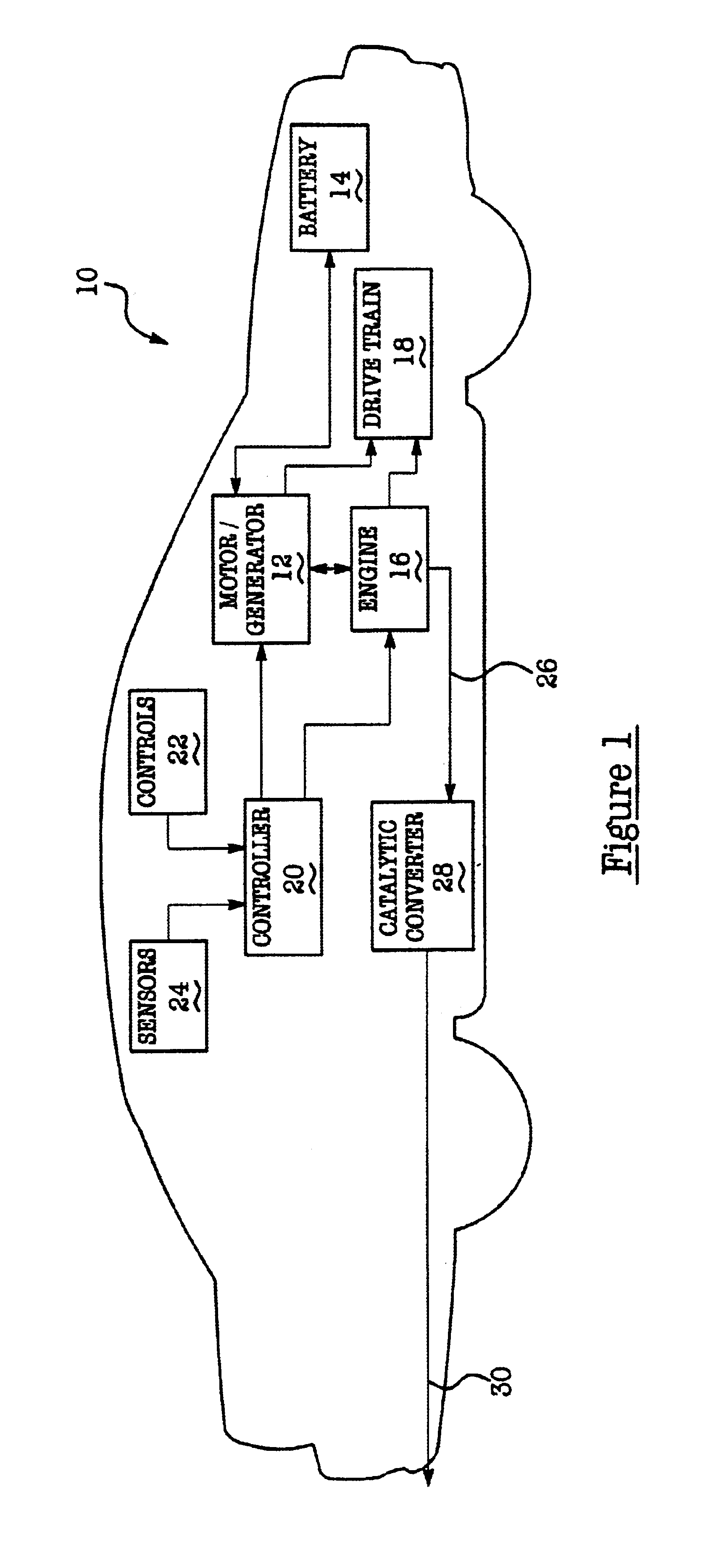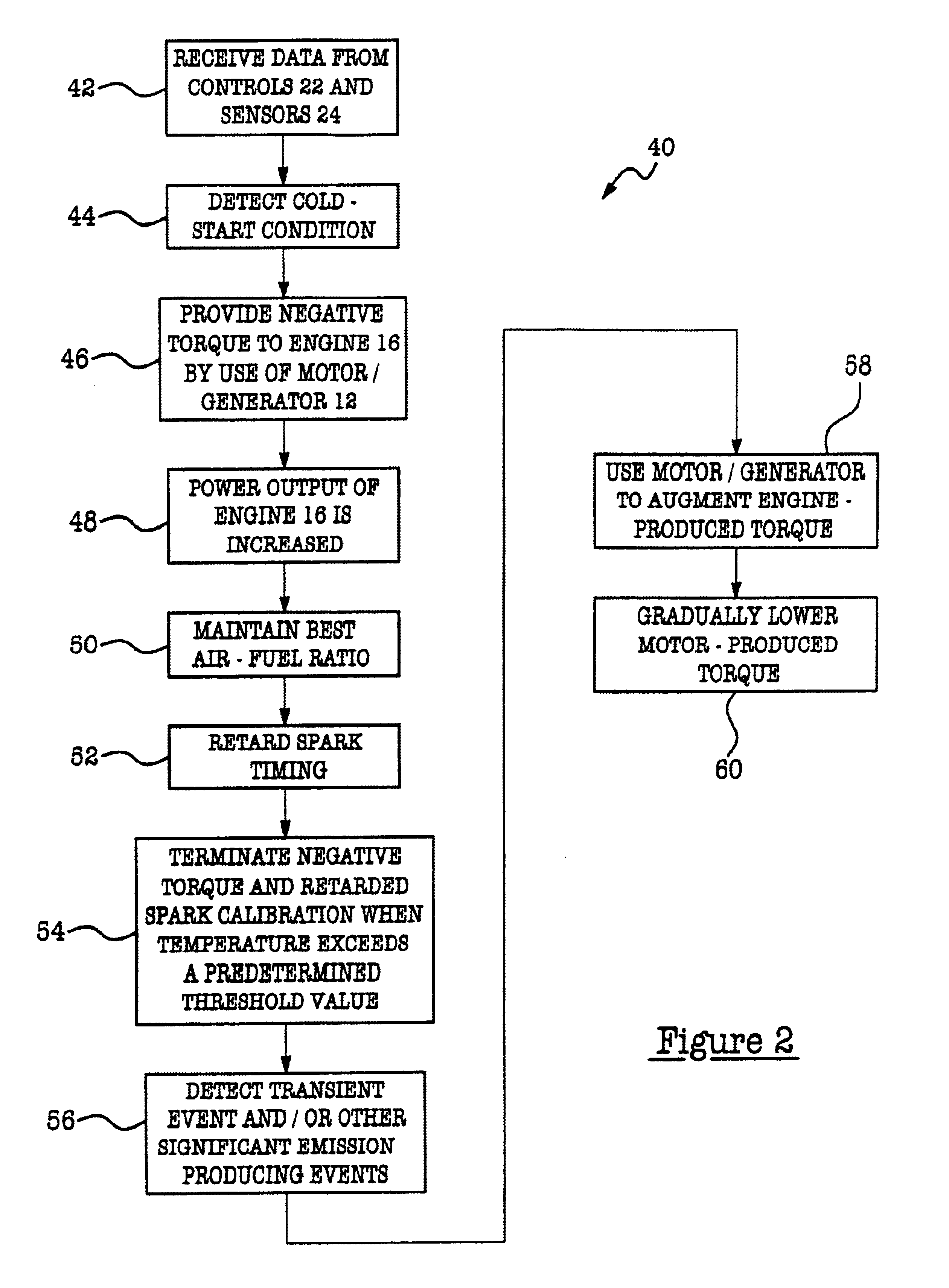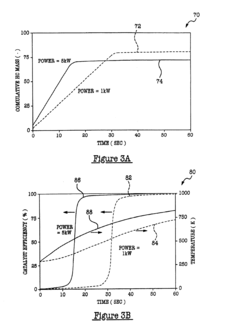HEV and Emission Standards: Adapting to New Norms
AUG 14, 20259 MIN READ
Generate Your Research Report Instantly with AI Agent
Patsnap Eureka helps you evaluate technical feasibility & market potential.
HEV Technology Evolution and Emission Goals
Hybrid Electric Vehicle (HEV) technology has undergone significant evolution since its inception, driven by the dual goals of improving fuel efficiency and reducing emissions. The journey began in the late 1990s with the introduction of the first commercially successful HEVs, which combined internal combustion engines with electric motors to achieve better fuel economy.
As environmental concerns grew, emission standards became increasingly stringent, pushing HEV technology to adapt and improve. The early 2000s saw rapid advancements in battery technology, power electronics, and energy management systems, enabling HEVs to achieve higher electric-only driving ranges and lower emissions.
The mid-2000s marked a turning point with the introduction of plug-in hybrid electric vehicles (PHEVs), which offered extended electric-only driving capabilities and further reduced reliance on fossil fuels. This development aligned with tightening emission standards worldwide, particularly in Europe, North America, and Asia.
In the 2010s, HEV technology focused on optimizing the integration of electric and combustion powertrains, improving regenerative braking systems, and enhancing overall system efficiency. Manufacturers also began exploring different hybrid architectures, such as series, parallel, and power-split systems, to meet diverse driving needs and emission requirements.
Recent years have seen a shift towards more powerful electric motors and higher-capacity batteries in HEVs, blurring the lines between traditional hybrids and fully electric vehicles. This trend is driven by increasingly stringent emission standards, particularly in urban areas where zero-emission zones are becoming more common.
Looking ahead, the goals for HEV technology are closely tied to global emission reduction targets. Many countries have set ambitious goals to phase out internal combustion engines entirely, with some aiming for 100% zero-emission vehicle sales by 2035 or earlier. This push is driving HEV technology towards higher electrification, with a focus on developing more efficient and affordable PHEVs as a transitional technology.
The ultimate aim is to create HEVs that can operate in zero-emission mode for extended periods, particularly in urban environments, while still offering the flexibility of long-range travel. Achieving this goal requires continued advancements in battery technology, electric motor efficiency, and intelligent energy management systems.
As environmental concerns grew, emission standards became increasingly stringent, pushing HEV technology to adapt and improve. The early 2000s saw rapid advancements in battery technology, power electronics, and energy management systems, enabling HEVs to achieve higher electric-only driving ranges and lower emissions.
The mid-2000s marked a turning point with the introduction of plug-in hybrid electric vehicles (PHEVs), which offered extended electric-only driving capabilities and further reduced reliance on fossil fuels. This development aligned with tightening emission standards worldwide, particularly in Europe, North America, and Asia.
In the 2010s, HEV technology focused on optimizing the integration of electric and combustion powertrains, improving regenerative braking systems, and enhancing overall system efficiency. Manufacturers also began exploring different hybrid architectures, such as series, parallel, and power-split systems, to meet diverse driving needs and emission requirements.
Recent years have seen a shift towards more powerful electric motors and higher-capacity batteries in HEVs, blurring the lines between traditional hybrids and fully electric vehicles. This trend is driven by increasingly stringent emission standards, particularly in urban areas where zero-emission zones are becoming more common.
Looking ahead, the goals for HEV technology are closely tied to global emission reduction targets. Many countries have set ambitious goals to phase out internal combustion engines entirely, with some aiming for 100% zero-emission vehicle sales by 2035 or earlier. This push is driving HEV technology towards higher electrification, with a focus on developing more efficient and affordable PHEVs as a transitional technology.
The ultimate aim is to create HEVs that can operate in zero-emission mode for extended periods, particularly in urban environments, while still offering the flexibility of long-range travel. Achieving this goal requires continued advancements in battery technology, electric motor efficiency, and intelligent energy management systems.
Market Demand for Low-Emission Vehicles
The market demand for low-emission vehicles has been steadily increasing in recent years, driven by a combination of environmental concerns, regulatory pressures, and shifting consumer preferences. Hybrid Electric Vehicles (HEVs) have emerged as a popular choice among consumers seeking to reduce their carbon footprint while maintaining the convenience of traditional internal combustion engines.
Global sales of HEVs have shown significant growth, with major automotive markets such as China, Europe, and North America leading the charge. In 2020, despite the overall automotive industry downturn due to the COVID-19 pandemic, HEV sales demonstrated resilience and continued growth. This trend has persisted into subsequent years, indicating a robust and expanding market for low-emission vehicles.
Consumer awareness of environmental issues and the desire for more fuel-efficient vehicles have been key drivers of HEV adoption. As fuel prices fluctuate and concerns about air quality in urban areas grow, consumers are increasingly considering HEVs as a practical and eco-friendly transportation option. Additionally, improvements in HEV technology, including enhanced battery life and performance, have made these vehicles more attractive to a broader range of consumers.
Government policies and incentives have played a crucial role in stimulating demand for low-emission vehicles. Many countries have implemented tax breaks, subsidies, and other financial incentives to encourage the purchase of HEVs and other low-emission vehicles. These policies have significantly influenced consumer behavior and accelerated the transition towards cleaner transportation options.
The corporate sector has also contributed to the growing demand for HEVs. Many companies are adopting sustainable practices and incorporating low-emission vehicles into their fleets as part of their environmental, social, and governance (ESG) initiatives. This trend has created a substantial market for HEVs in the commercial and fleet sectors.
Market analysts project continued growth in the HEV segment, with some forecasts suggesting double-digit annual growth rates in the coming years. This growth is expected to be fueled by ongoing technological advancements, expanding charging infrastructure, and increasingly stringent emission standards worldwide.
However, the HEV market faces competition from other low-emission vehicle technologies, particularly Battery Electric Vehicles (BEVs). As BEV technology improves and charging infrastructure expands, some consumers may opt for fully electric vehicles over hybrids. Nevertheless, HEVs are likely to maintain a significant market share, especially in regions where charging infrastructure is still developing or among consumers who require longer driving ranges.
In conclusion, the market demand for low-emission vehicles, particularly HEVs, shows strong growth potential. This demand is driven by a combination of environmental consciousness, regulatory pressures, technological advancements, and economic incentives. As emission standards continue to evolve, the HEV market is well-positioned to adapt and thrive in the changing automotive landscape.
Global sales of HEVs have shown significant growth, with major automotive markets such as China, Europe, and North America leading the charge. In 2020, despite the overall automotive industry downturn due to the COVID-19 pandemic, HEV sales demonstrated resilience and continued growth. This trend has persisted into subsequent years, indicating a robust and expanding market for low-emission vehicles.
Consumer awareness of environmental issues and the desire for more fuel-efficient vehicles have been key drivers of HEV adoption. As fuel prices fluctuate and concerns about air quality in urban areas grow, consumers are increasingly considering HEVs as a practical and eco-friendly transportation option. Additionally, improvements in HEV technology, including enhanced battery life and performance, have made these vehicles more attractive to a broader range of consumers.
Government policies and incentives have played a crucial role in stimulating demand for low-emission vehicles. Many countries have implemented tax breaks, subsidies, and other financial incentives to encourage the purchase of HEVs and other low-emission vehicles. These policies have significantly influenced consumer behavior and accelerated the transition towards cleaner transportation options.
The corporate sector has also contributed to the growing demand for HEVs. Many companies are adopting sustainable practices and incorporating low-emission vehicles into their fleets as part of their environmental, social, and governance (ESG) initiatives. This trend has created a substantial market for HEVs in the commercial and fleet sectors.
Market analysts project continued growth in the HEV segment, with some forecasts suggesting double-digit annual growth rates in the coming years. This growth is expected to be fueled by ongoing technological advancements, expanding charging infrastructure, and increasingly stringent emission standards worldwide.
However, the HEV market faces competition from other low-emission vehicle technologies, particularly Battery Electric Vehicles (BEVs). As BEV technology improves and charging infrastructure expands, some consumers may opt for fully electric vehicles over hybrids. Nevertheless, HEVs are likely to maintain a significant market share, especially in regions where charging infrastructure is still developing or among consumers who require longer driving ranges.
In conclusion, the market demand for low-emission vehicles, particularly HEVs, shows strong growth potential. This demand is driven by a combination of environmental consciousness, regulatory pressures, technological advancements, and economic incentives. As emission standards continue to evolve, the HEV market is well-positioned to adapt and thrive in the changing automotive landscape.
Current HEV Tech and Emission Challenges
Hybrid Electric Vehicles (HEVs) have emerged as a crucial technology in the automotive industry's efforts to reduce emissions and improve fuel efficiency. The current state of HEV technology represents a significant advancement in powertrain design, combining internal combustion engines with electric motors and battery systems. This hybrid approach allows for improved fuel economy and reduced emissions compared to conventional vehicles.
However, the HEV sector faces several challenges in light of evolving emission standards. One of the primary hurdles is the continuous tightening of regulations worldwide, particularly in major markets such as the European Union, United States, and China. These stringent standards require HEVs to achieve even lower levels of greenhouse gas emissions and pollutants, pushing manufacturers to innovate further.
The current HEV technology relies heavily on sophisticated engine management systems and advanced catalytic converters to minimize emissions. While these systems have proven effective, they are approaching their limits in terms of emission reduction capabilities. This limitation is particularly evident in real-world driving conditions, where HEVs may struggle to maintain optimal emission levels across various driving scenarios.
Another significant challenge lies in the balance between electric and combustion power usage. HEVs must optimize the interplay between these two power sources to maximize efficiency and minimize emissions. This optimization becomes increasingly complex as emission standards become more stringent, requiring more frequent and seamless transitions between electric and combustion power.
Battery technology remains a critical factor in HEV performance and emission reduction. Current lithium-ion batteries, while vastly improved from earlier generations, still face limitations in energy density, charging speed, and lifecycle. These constraints impact the electric-only range of HEVs and, consequently, their overall emission profiles.
The manufacturing process of HEVs also presents challenges in meeting emission standards. The production of batteries and electric components can have a significant carbon footprint, which must be considered in the vehicle's overall environmental impact assessment. Manufacturers are under pressure to develop cleaner production methods and more sustainable supply chains.
Adapting to new emission norms also requires substantial investment in research and development. HEV manufacturers must continually innovate to stay ahead of regulatory requirements, which can strain resources and impact vehicle costs. This financial burden is particularly challenging for smaller manufacturers and can potentially limit market competition.
In conclusion, while current HEV technology has made significant strides in reducing emissions, it faces considerable challenges in adapting to increasingly stringent standards. The industry must address limitations in powertrain efficiency, battery technology, and manufacturing processes to meet future emission norms effectively. This ongoing evolution of HEV technology will play a crucial role in shaping the automotive landscape and environmental sustainability efforts in the coming years.
However, the HEV sector faces several challenges in light of evolving emission standards. One of the primary hurdles is the continuous tightening of regulations worldwide, particularly in major markets such as the European Union, United States, and China. These stringent standards require HEVs to achieve even lower levels of greenhouse gas emissions and pollutants, pushing manufacturers to innovate further.
The current HEV technology relies heavily on sophisticated engine management systems and advanced catalytic converters to minimize emissions. While these systems have proven effective, they are approaching their limits in terms of emission reduction capabilities. This limitation is particularly evident in real-world driving conditions, where HEVs may struggle to maintain optimal emission levels across various driving scenarios.
Another significant challenge lies in the balance between electric and combustion power usage. HEVs must optimize the interplay between these two power sources to maximize efficiency and minimize emissions. This optimization becomes increasingly complex as emission standards become more stringent, requiring more frequent and seamless transitions between electric and combustion power.
Battery technology remains a critical factor in HEV performance and emission reduction. Current lithium-ion batteries, while vastly improved from earlier generations, still face limitations in energy density, charging speed, and lifecycle. These constraints impact the electric-only range of HEVs and, consequently, their overall emission profiles.
The manufacturing process of HEVs also presents challenges in meeting emission standards. The production of batteries and electric components can have a significant carbon footprint, which must be considered in the vehicle's overall environmental impact assessment. Manufacturers are under pressure to develop cleaner production methods and more sustainable supply chains.
Adapting to new emission norms also requires substantial investment in research and development. HEV manufacturers must continually innovate to stay ahead of regulatory requirements, which can strain resources and impact vehicle costs. This financial burden is particularly challenging for smaller manufacturers and can potentially limit market competition.
In conclusion, while current HEV technology has made significant strides in reducing emissions, it faces considerable challenges in adapting to increasingly stringent standards. The industry must address limitations in powertrain efficiency, battery technology, and manufacturing processes to meet future emission norms effectively. This ongoing evolution of HEV technology will play a crucial role in shaping the automotive landscape and environmental sustainability efforts in the coming years.
Existing HEV Emission Reduction Solutions
01 Emission control systems for hybrid vehicles
Advanced emission control systems are developed specifically for hybrid electric vehicles to reduce harmful emissions. These systems may include catalytic converters, particulate filters, and exhaust gas recirculation technologies tailored to the unique operating conditions of hybrid powertrains.- Emission control systems for hybrid vehicles: Advanced emission control systems are developed specifically for hybrid electric vehicles to reduce harmful emissions. These systems may include catalytic converters, particulate filters, and exhaust gas recirculation technologies tailored to the unique operating conditions of hybrid powertrains.
- Battery thermal management for emission reduction: Efficient battery thermal management systems are implemented in hybrid vehicles to optimize battery performance and longevity, indirectly contributing to reduced emissions by maintaining optimal powertrain efficiency across various operating conditions.
- Regenerative braking and energy recovery: Advanced regenerative braking systems are employed in hybrid vehicles to recover and store kinetic energy during deceleration, reducing overall energy consumption and emissions. These systems are optimized to work in conjunction with conventional friction brakes for maximum efficiency.
- Intelligent powertrain control strategies: Sophisticated control algorithms are developed to manage the interaction between the internal combustion engine and electric motor in hybrid vehicles. These strategies optimize power distribution, engine start-stop functionality, and electric-only operation to minimize emissions across various driving conditions.
- Lightweight materials and aerodynamic design: Hybrid vehicles incorporate lightweight materials and aerodynamic design elements to reduce overall vehicle weight and improve fuel efficiency. These measures contribute to lower energy consumption and reduced emissions during both electric and combustion engine operation.
02 Battery thermal management for emission reduction
Efficient battery thermal management systems are implemented in hybrid vehicles to optimize battery performance and longevity, indirectly contributing to reduced emissions by maintaining optimal operating conditions for the electric powertrain components.Expand Specific Solutions03 Regenerative braking and energy recovery
Advanced regenerative braking systems are employed in hybrid vehicles to recover and store energy during deceleration, reducing overall energy consumption and emissions. These systems are optimized to work in conjunction with conventional braking systems for maximum efficiency.Expand Specific Solutions04 Intelligent powertrain control strategies
Sophisticated control algorithms are developed to manage the interaction between the internal combustion engine and electric motor in hybrid vehicles. These strategies optimize power distribution, minimize fuel consumption, and reduce emissions across various driving conditions.Expand Specific Solutions05 On-board diagnostics and emission monitoring
Advanced on-board diagnostic systems are implemented in hybrid vehicles to continuously monitor emissions and powertrain performance. These systems can detect and report emission-related issues, ensuring compliance with emission standards throughout the vehicle's lifecycle.Expand Specific Solutions
Key Players in HEV and Emission Tech
The research on HEV and emission standards adaptation is in a dynamic phase, with the market rapidly expanding due to increasing environmental concerns and regulatory pressures. The global HEV market is projected to grow significantly, driven by stringent emission norms and government incentives. Technologically, the field is advancing, with major players like Toyota, Hyundai, and Ford leading innovation. These companies are investing heavily in R&D to improve HEV efficiency and reduce emissions. Emerging players such as Kia and Chery are also making strides, intensifying competition. The technology's maturity varies, with established manufacturers having more advanced systems, while newer entrants are quickly catching up, indicating a competitive and evolving landscape.
Ford Global Technologies LLC
Technical Solution: Ford has developed a range of HEV technologies to meet evolving emission standards. Their PowerSplit hybrid architecture combines a gasoline engine with two electric motors, allowing for multiple power flow paths and improved efficiency[4]. Ford's HEVs utilize advanced lithium-ion battery technology and regenerative braking systems to maximize energy recovery. The company has also implemented cylinder deactivation technology in their HEV engines, which can shut down cylinders when not needed, further improving fuel economy and reducing emissions[5]. Ford's latest HEVs incorporate predictive energy management systems that use GPS and traffic data to optimize powertrain operation for specific routes. Additionally, Ford has developed a modular hybrid transmission that can be easily adapted to different vehicle platforms, allowing for faster implementation of HEV technology across their product line[6].
Strengths: Flexible hybrid architecture, advanced energy management systems, and scalable technology. Weaknesses: Relatively late entry into the HEV market compared to some competitors.
Toyota Motor Corp.
Technical Solution: Toyota has developed advanced hybrid electric vehicle (HEV) technology to meet stringent emission standards. Their latest HEV system combines a highly efficient gasoline engine with powerful electric motors, achieving up to 40% thermal efficiency[1]. The system incorporates intelligent energy management, regenerative braking, and advanced catalytic converters to minimize emissions. Toyota's HEVs utilize a sophisticated power split device that allows seamless transitions between electric and gasoline power, optimizing fuel economy and reducing emissions. Additionally, Toyota has implemented advanced exhaust gas after-treatment systems, including selective catalytic reduction (SCR) technology, to further reduce nitrogen oxide (NOx) emissions[2]. The company is also exploring the use of artificial intelligence to predict and optimize HEV performance based on driving conditions and patterns[3].
Strengths: Industry-leading hybrid technology, high fuel efficiency, and low emissions. Weaknesses: Higher initial cost compared to conventional vehicles, reliance on rare earth materials for electric motors.
Core Innovations in HEV Emission Control
Hybrid electric vehicle and a method for operating a hybrid electric vehicle
PatentInactiveUS6868926B2
Innovation
- A hybrid electric vehicle configuration with a planetary gear set that mechanically couples the internal combustion engine to a generator motor and traction motor, allowing the engine to be activated only after reaching a predetermined speed, using a ramped speed profile to minimize noise, vibration, and hydrocarbon emissions, and optimizing fuel injection and spark timing for efficient combustion.
Method of operating a hybrid electric vehicle to reduce emissions
PatentInactiveUS6856034B2
Innovation
- A method for a hybrid electric vehicle that utilizes the electric motor/generator to selectively increase the power output of the internal combustion engine during cold-start conditions by providing negative torque, and during transient events, provides positive torque to reduce engine load and emissions, thereby accelerating catalytic converter light-off and maintaining optimal air-fuel ratios.
Global Emission Standards and Policies
Global emission standards and policies have become increasingly stringent in recent years, driven by growing concerns over air quality, public health, and climate change. These regulations play a crucial role in shaping the automotive industry, particularly in the development and adoption of hybrid electric vehicles (HEVs) and other low-emission technologies.
The European Union has been at the forefront of implementing strict emission standards through its Euro emissions regulations. The current Euro 6 standard, introduced in 2014, sets limits for various pollutants including carbon monoxide, nitrogen oxides, and particulate matter. The EU is now preparing for the implementation of Euro 7, which is expected to further tighten emission limits and introduce new testing procedures.
In the United States, the Corporate Average Fuel Economy (CAFE) standards and the Environmental Protection Agency's (EPA) emissions regulations have been key drivers for vehicle efficiency improvements. The Biden administration has recently proposed new standards that would require automakers to achieve an industry-wide target of 49 miles per gallon by 2026, significantly accelerating the transition towards more efficient vehicles, including HEVs.
China, the world's largest automotive market, has also been ramping up its efforts to combat vehicle emissions. The China 6 emission standard, comparable to Euro 6, was fully implemented nationwide in 2020. Additionally, China has set ambitious targets for new energy vehicles (NEVs), including HEVs, aiming for them to account for 20% of all vehicle sales by 2025.
Japan, a pioneer in hybrid technology, has its own set of emission standards known as the Post New Long-Term (PNLT) regulations. These standards are among the most stringent globally and have been instrumental in promoting the development and adoption of HEVs in the Japanese market.
The global trend towards stricter emission standards has significant implications for the automotive industry. Manufacturers are increasingly investing in HEV technology as a means to meet these regulations while also satisfying consumer demand for more fuel-efficient vehicles. This regulatory landscape is driving innovation in areas such as battery technology, powertrain efficiency, and lightweight materials.
Moreover, many countries are implementing incentive programs to encourage the adoption of low-emission vehicles. These include tax credits, rebates, and preferential treatment in urban areas, such as access to low-emission zones or dedicated parking spaces. Such policies complement emission standards by creating market demand for cleaner vehicles, including HEVs.
As emission standards continue to evolve, automakers face the challenge of adapting their product portfolios and technology roadmaps. The transition towards electrification is accelerating, with HEVs serving as a bridge technology between conventional internal combustion engines and fully electric vehicles. This shift is reshaping the competitive landscape of the automotive industry and driving significant investments in research and development.
The European Union has been at the forefront of implementing strict emission standards through its Euro emissions regulations. The current Euro 6 standard, introduced in 2014, sets limits for various pollutants including carbon monoxide, nitrogen oxides, and particulate matter. The EU is now preparing for the implementation of Euro 7, which is expected to further tighten emission limits and introduce new testing procedures.
In the United States, the Corporate Average Fuel Economy (CAFE) standards and the Environmental Protection Agency's (EPA) emissions regulations have been key drivers for vehicle efficiency improvements. The Biden administration has recently proposed new standards that would require automakers to achieve an industry-wide target of 49 miles per gallon by 2026, significantly accelerating the transition towards more efficient vehicles, including HEVs.
China, the world's largest automotive market, has also been ramping up its efforts to combat vehicle emissions. The China 6 emission standard, comparable to Euro 6, was fully implemented nationwide in 2020. Additionally, China has set ambitious targets for new energy vehicles (NEVs), including HEVs, aiming for them to account for 20% of all vehicle sales by 2025.
Japan, a pioneer in hybrid technology, has its own set of emission standards known as the Post New Long-Term (PNLT) regulations. These standards are among the most stringent globally and have been instrumental in promoting the development and adoption of HEVs in the Japanese market.
The global trend towards stricter emission standards has significant implications for the automotive industry. Manufacturers are increasingly investing in HEV technology as a means to meet these regulations while also satisfying consumer demand for more fuel-efficient vehicles. This regulatory landscape is driving innovation in areas such as battery technology, powertrain efficiency, and lightweight materials.
Moreover, many countries are implementing incentive programs to encourage the adoption of low-emission vehicles. These include tax credits, rebates, and preferential treatment in urban areas, such as access to low-emission zones or dedicated parking spaces. Such policies complement emission standards by creating market demand for cleaner vehicles, including HEVs.
As emission standards continue to evolve, automakers face the challenge of adapting their product portfolios and technology roadmaps. The transition towards electrification is accelerating, with HEVs serving as a bridge technology between conventional internal combustion engines and fully electric vehicles. This shift is reshaping the competitive landscape of the automotive industry and driving significant investments in research and development.
Environmental Impact of HEV Technologies
The environmental impact of Hybrid Electric Vehicle (HEV) technologies has become a focal point in the automotive industry's efforts to reduce emissions and meet increasingly stringent environmental standards. HEVs, which combine conventional internal combustion engines with electric propulsion systems, offer significant potential for reducing greenhouse gas emissions and improving air quality in urban areas.
One of the primary environmental benefits of HEV technologies is the reduction in fuel consumption and, consequently, lower carbon dioxide (CO2) emissions. Studies have shown that HEVs can achieve up to 35% reduction in CO2 emissions compared to conventional vehicles, depending on driving conditions and vehicle models. This reduction is particularly significant in urban environments, where stop-and-go traffic allows for more frequent use of the electric motor.
HEVs also contribute to improved local air quality by reducing emissions of other pollutants such as nitrogen oxides (NOx) and particulate matter (PM). The electric motor's ability to assist or completely power the vehicle at low speeds and during idling significantly reduces these emissions in congested urban areas, where air quality concerns are often most acute.
The production and disposal of HEV batteries, however, present environmental challenges that must be addressed. The manufacturing process for lithium-ion batteries, commonly used in HEVs, is energy-intensive and can result in significant CO2 emissions. Additionally, the mining of raw materials for battery production, such as lithium and cobalt, can have localized environmental impacts, including water pollution and habitat disruption.
To mitigate these concerns, the automotive industry is investing in research and development of more sustainable battery technologies and recycling processes. Advanced recycling techniques are being developed to recover valuable materials from used batteries, reducing the need for new raw material extraction and minimizing waste.
The overall lifecycle environmental impact of HEVs depends on various factors, including the source of electricity used for charging, the vehicle's lifespan, and end-of-life management practices. As power grids increasingly incorporate renewable energy sources, the environmental benefits of HEVs are expected to grow, further reducing their carbon footprint.
In conclusion, while HEV technologies offer significant environmental benefits in terms of reduced emissions and improved air quality, addressing the environmental impacts associated with battery production and disposal remains crucial for maximizing their positive environmental contribution. As the technology continues to evolve and adapt to new emission standards, ongoing research and innovation will be essential to further enhance the environmental performance of HEVs.
One of the primary environmental benefits of HEV technologies is the reduction in fuel consumption and, consequently, lower carbon dioxide (CO2) emissions. Studies have shown that HEVs can achieve up to 35% reduction in CO2 emissions compared to conventional vehicles, depending on driving conditions and vehicle models. This reduction is particularly significant in urban environments, where stop-and-go traffic allows for more frequent use of the electric motor.
HEVs also contribute to improved local air quality by reducing emissions of other pollutants such as nitrogen oxides (NOx) and particulate matter (PM). The electric motor's ability to assist or completely power the vehicle at low speeds and during idling significantly reduces these emissions in congested urban areas, where air quality concerns are often most acute.
The production and disposal of HEV batteries, however, present environmental challenges that must be addressed. The manufacturing process for lithium-ion batteries, commonly used in HEVs, is energy-intensive and can result in significant CO2 emissions. Additionally, the mining of raw materials for battery production, such as lithium and cobalt, can have localized environmental impacts, including water pollution and habitat disruption.
To mitigate these concerns, the automotive industry is investing in research and development of more sustainable battery technologies and recycling processes. Advanced recycling techniques are being developed to recover valuable materials from used batteries, reducing the need for new raw material extraction and minimizing waste.
The overall lifecycle environmental impact of HEVs depends on various factors, including the source of electricity used for charging, the vehicle's lifespan, and end-of-life management practices. As power grids increasingly incorporate renewable energy sources, the environmental benefits of HEVs are expected to grow, further reducing their carbon footprint.
In conclusion, while HEV technologies offer significant environmental benefits in terms of reduced emissions and improved air quality, addressing the environmental impacts associated with battery production and disposal remains crucial for maximizing their positive environmental contribution. As the technology continues to evolve and adapt to new emission standards, ongoing research and innovation will be essential to further enhance the environmental performance of HEVs.
Unlock deeper insights with Patsnap Eureka Quick Research — get a full tech report to explore trends and direct your research. Try now!
Generate Your Research Report Instantly with AI Agent
Supercharge your innovation with Patsnap Eureka AI Agent Platform!
